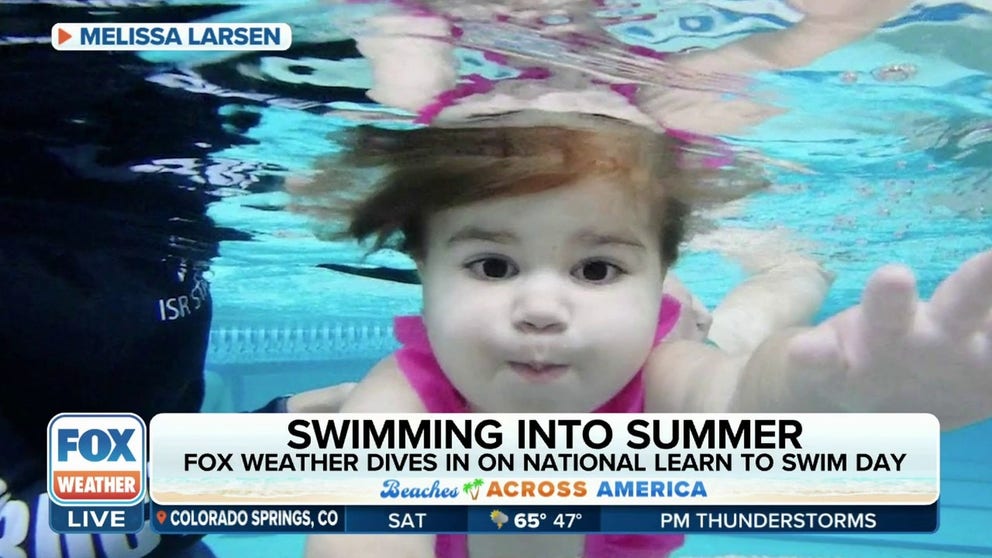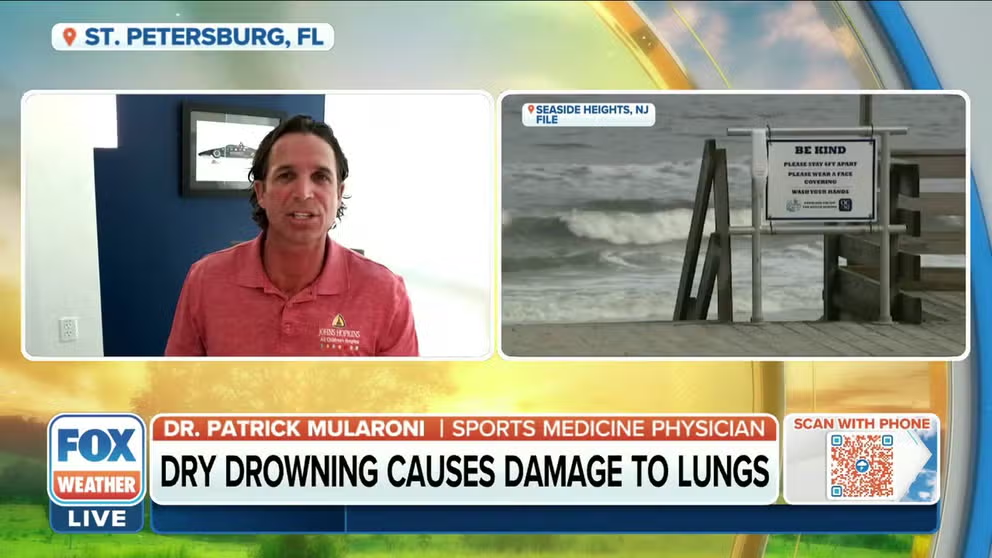Swim safety: Don’t let your kids wear this color in the pool
The last thing you want your kid to be in case of any water emergency is difficult to spot, swim safety instructors say, as part of a list of tips for parents to follow for swim safety this summer.
Now is the time to think about swimming safety for families, kids
Infant swimming resource instructor Melissa Larsen joins FOX Weather on National Learn to Swim Day from the Suffolk JCC in Commack, New York.
COMMACK, N.Y. – Before you dip into the pool this summer, it's a good time to think about swimming safety for families.
Did you know the color swimsuit your child wears while swimming matters?
Infant swimming resource instructor Melissa Larsen at the Suffolk JCC in Commack, New York, said parents should avoid the color blue.
"It blends into the background, and it kind of lets your eyes skate over it," she said. "What we want when we're going for some time is nice bright colors, nice contrasting catch your eye colors."
Good examples would be red or even bright orange, which contrasts with the blue of the water.
"It just helps your eyes stay focused on that child," Larsen said. "And God forbid it's an emergency, and you're scanning the water, you spot that child quickly when seconds count in an emergency, and get them out of the water as fast as possible."
10 LARGEST US LAKES WORTH VISITING DURING YOUR NEXT VACATION
Water safety: What we need to watch out for while swimming this summer
Dr. Patrick Mularoni, Medical Director of Sports Medicine at Johns Hopkins All Children’s Hospital, goes in-depth on water safety for the summer.
Ditch the pool floaters too
It's not just clothing either. Are you a parent who still places floaters around your kid's arms before entering the water? If you do, stop.
Larsen says she would recommend against that.
"Young children learn through their experience of their environment," she said. "So if they learn that they're naturally buoyant in the water while they're wearing those devices, they learn to expect that."
Then after they are removed, kids will enter the water, expecting to be naturally skilled and buoyant, which has disastrous consequences, Larsen adds.
"So early on, we want to teach children about their own buoyancy, about their own skills, and teach them skills," she continues.
Infant swimming resource instructors, like Larsen, can teach children as young as 6 months old to know how to float down their back, to rest and breathe, as a layer of protection against drowning.
"Because we want our children to understand how the water works, to respect the water, and to be safe whenever they're interacting with it," Larsen said.

